This page addresses a number of frequently asked questions about the Nutrient Optimiser including:
- Are micronutrients really that important? I just want to lose weight!
- Isn’t it just about controlling calories?
- Can you get too many nutrients?
- Aren’t the nutrient recommendations just made up?
- Do some people need more nutrients than others?
- How do I use the information from the Nutrient Optimiser?
- Can I use MyFitnessPal data in the Nutrient Optimiser?
- Do I need to weigh and measure my food?
- Can I just use the general food lists?
- How much will the automated Nutrient Optimiser cost?
- Should I log my supplements?
- Why is nutrient density important?
- Will the Nutrient Optimiser help me manage my diabetes?
- Will the Nutrient Optimiser help me achieve ketosis?
- Will the Nutrient Optimiser help with fat loss?
- Is the Nutrient Optimiser useful for athletes and bodybuilders?
- What about longevity?
- How often should I use the Nutrient Optimiser?
- What about macronutrients?
- Are plant or animal products optimal?
- What other test data can I use to help refine my diet?
- Can the Nutrient Optimiser help me with other conditions?
- What about nutrient bioavailability?
- What about anti-nutrients?
- What about all the compounds that aren’t quantified in the USDA database?
- Can I send you my Cronometer data rather sharing my username and password?
- What are the most common nutrient deficiencies?
- How long do I need to log my food for?
- How is the “nutrient score” calculated?
- Why do you use nutrients per calorie?
- Who created the Nutrient Optimiser and why?
- Any further questions?
1. Are micronutrients really that important? I just want to lose weight!
The chart below shows that many people are deficient in a range of key nutrients.

Processed hyper-palatable foods that you find on the supermarket shelves are designed to be energy dense and nutrient poor.
Modern foods are grown quickly for quantity and cost rather than quality and nutrition.
Most people consume far more energy than they need in pursuit of the nutrients that they need.
“A nourishing, balanced diet that provides all the required nutrients in the right proportions is the key to minimising appetite and eliminating hunger at minimal caloric intake.”
Paul Jaminet in his Perfect Health Diet
Nutrient dense foods will give you more energy reduce your cravings.
Foods high in micronutrients are typically unprocessed and hard to overeat.
2. Isn’t it just about calories?
Calories count, but it’s hard to count your calorie intake accurately, let alone your calorie expenditure.
Many people try to restrict their intake, but most people don’t win the fight against their own appetite.
Improving your food quality as the first priority will help you stabilise your blood sugar and insulin as well as reduce nutrient cravings that drive you to eat impulsively.
If you still require further weight loss you can use the Nutrient Optimiser to help you identify lower energy density foods that are harder to overeat.

If you’re trying to lose weight, the Nutrient Optimiser will help you find an appropriate calorie and macronutrient range to help you meet your goals.
If you’re not a fan of counting calories you can look at delaying your meals based on your blood sugar (as per this article) or not eating on days that your weight is above your target weight (as per this article).
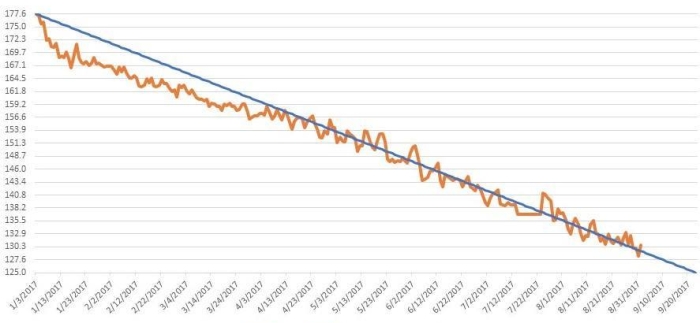
3. Can you get too many nutrients?
It is possible to get too much of a good thing.
Along with Adequate Intake (AI) levels and Recommended Daily Intake (DRI) intake levels, most of the micronutrient have an Upper Limit (UL) intake.
However, it is generally not possible to reach these upper without supplements (with the exception of vitamin A from large amounts of liver).
Most people find that they have a handful of nutrients for which they are not meeting the recommended daily intake levels. The Nutrient Optimiser will identify while foods and nutritious meals that will help you get the nutrients you are lacking.
Getting your nutrients from food, rather than supplements, is generally ideal is they come packaged with other essential nutrients as well as many other non-essential nutrients and other beneficial compounds that you won’t get in a bottle from iHerb.
While it’s ideal to get your nutrients from whole food, the Nutrient Optimiser will also help you identify supplements that will enable you to fill in your nutrient deficiencies until you are able to improve your diet.
4. Aren’t the nutrient recommendations just “made up”?
While deemed to be essential nutrients, the recommended intake levels of the following micronutrients are based on population averages:
- alpha-linolenic acid,
- manganese,
- vitamin E,
- pantothenic acid, and
- copper.
These nutrients are technically essential, however, there is not enough research to demonstrate the deficiency symptoms so the recommended intake levels of these nutrients is based on the typical intake of healthy populations.
These nutrients typically don’t dominate the skew the nutritional analysis. Prioritising a handful of nutrients rather than a single nutrient means that consideration of the nutrients listed above doesn’t significantly change the outcome of the analysis.
However, the recommended intake level of the other nutrients is based on robust deficiency studies. Specific symptoms and diseases may eventuate if we do not achieve minimum levels on an ongoing basis. These nutrients include:
- vitamin D,
- choline
- potassium,
- calcium
- zinc,
- vitamin A,
- folate,
- selenium,
- thiamine,
- omega 3,
- magnesium,
- sodium, and
- amino acids.
The nutrient intake levels are the subject of extensive studies by various government organisations and the World Health Organisation. You can read more about the basis of the recommended quantities of the various essential nutrients here.
5. Do some people need more or less nutrients than others?
There are a range of things that will affect your nutrient requirements such as your sex, age, whether you are pregnant.
- Athletes require more electrolytes (e.g. potassium, magnesium, sodium) to replenish those lost from sweat and amino acids to rebuild muscles.
- People who are not eating a lot of glucose (e.g. keto, low carb or carnivore diets) may not need as many antioxidants such as (e.g. vitamin C and vitamin E).
- People not eating any animal products (e.g. vegan, vegetarian, plant-based diets) will need to focus on getting adequate omega 3s, vitamin B12, choline and amino acids due to the lower bioavailability of the nutrients from plant-based sources.
All these factors can be taken into account when refining your recommended foods to suit your needs. However, most people will do well, at least initially, if they focus on the foods that contain more of the essential nutrients that they are not getting enough of based on the standard recommendations.
6. How do I use all the information that the Nutrient Optimiser provides?
One of the main outputs of the Nutrient Optimiser is the optimised food lists tailored to your goals and your current nutrient deficiencies based on your food log.
6.1 How to interpret the food lists
The food lists are based on the top 10% of the eight thousand foods in the USDA database and are sorted in order with the foods at the top of the list being best for you.
If you don’t like a particular food or can’t find it easily you can work your way down the list until you find a food you like.
Try to choose foods from each of the food groups.
The amount of foods you select from each category is up to you and your personal preference. They are all tailored to suit your goals and situation.
6.2 Cooking for a family (relaxed)
Cooking for a family requires some flexibility.

You can use the food lists for inspiration for your next shopping expedition. Buy more of these foods each week and make sure you use them in your cooking by the end of the week.
Yes, you may need to do more cooking but the meals don’t have to be complex. Fresh is typically best, but you can buy frozen veggies and canned fish to make things easier while still keeping nutrient density high.
Pin the list to your fridge with a magnet and use it as a reminder of what you should be eating to achieve your goals during the week. Many people have benefitted from this.
6.3 Planning for an individual (disciplined)
If you are able to be more disciplined then you can use the food lists to plan your nutrition for the coming week. This may be appropriate if you are just cooking for yourself and want to plan the meals in detail to ensure you meet your goals.
While focusing on quality will be adequate for many people, detailed meal planning would be ideal for disciplined long term weight loss, bodybuilding or therapeutic ketosis.

If you want to micromanage your diet you can take your previous week’s food log, copy it forward to the coming week and refine it by removing some of the not so good foods and replacing them with foods closer to the top of each category. Repeating this process on a week to week basis will enable you to progressively refine your diet and ensure you are achieving your goals.
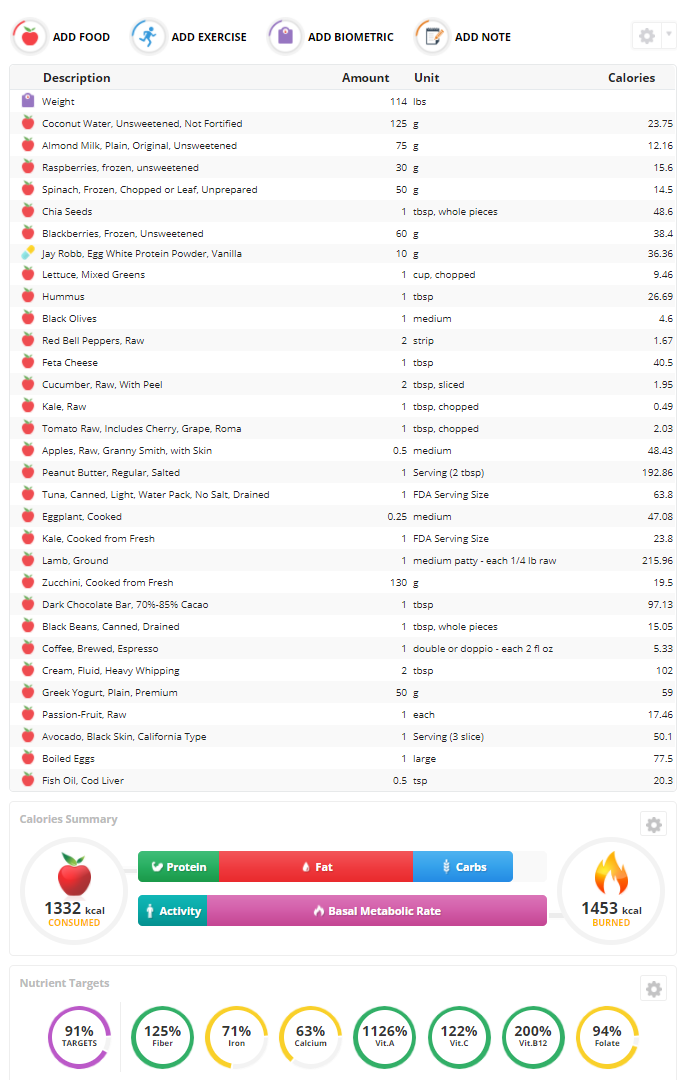
Preparing your meals ahead of time will improve your chances of long term success.
7. Can I use MyFitnessPal data in the Nutrient Optimiser?
Unfortunately, the answer to this commonly asked questions is no.
MyFitnessPal doesn’t track micronutrients, only macros.
Only Cron-o-meter collects the micronutrient data that is required for the Nutrient Optimiser analysis.

Getting accurate input data is critical to making the most of the Nutrient Optimiser analysis.
Garbage in = Garbage out.
While MFP has a LOT of foods in their database, most of them are entered by users and are notoriously inaccurate. They also don’t contain the micronutrient data that the Nutrient Optimiser relies on.
The Cronometer database has nearly sixty thousand foods and you can enter your own custom foods or recipes if you want to.
In order to get the most accurate data, it is ideal if you can log more foods from the USDA database which are often less processed rather than other foods that may not have as much nutrient data available. When you log your food in Cronometer it will tell you how many nutrients are available for that food.
Cronometer gives you a running tally of the nutrients you are meeting the recommended daily intake levels of and the ones you need to pay more attention to, however only the Nutrient Optimiser tells you which foods and meals you need to provide the nutrients you are not getting enough of.
If you currently use another food tracking system (such as MFP) but want to use the Nutrient Optimiser, you can set up a free Cronometer account and transfer a couple of weeks of data for analysis.
8. Do I need to weigh and measure my food?
Don’t worry too much about weighing and measuring every morsel of food, at least initially.
While calories and energy intake still matter, tracking your intake and expenditure accurately without a metabolic chamber is difficult.
Nutrient-dense foods that make you feel full and keep your blood sugar levels are typically more satiating and harder to overeat. Most people find that they get the majority of the results they are chasing by dialling in their food quality rather than micromanaging their energy intake.
If, after you really dial in your nutrition, you find that you need to micromanage your energy intake, the Nutrient Optimiser algorithm can help you calculate your target calories and macronutrient ranges to ensure you achieve your target rate of weight loss.
Making sure you get the nutrients you need when restricting calories will vastly improve your chances of success.
9. Should I log my supplements?
The primary goal of the Nutrient Optimiser is to help you balance your micronutrient intake with whole food. We recommend you don’t log your supplements, at least initially.
Relying heavily on supplements is not ideal. There are a wide range of non-essential nutrients and secondary compounds that are not tracked in the USDA food database that are impossible to micromanage quantitatively. If you focus on getting your essential micronutrients from whole foods you will have a good chance of getting all these other nutrients from the whole foods.
If, after following the recommendations you are not able to cover off all of the essential nutrients with real food, the Nutrient Optimiser will help you identify supplements that you need.
Nutrients are also not included in the Nutrient Score to show your rank on the leaderboard as we want to focus on optimising diet with whole foods rather than creating the ultimate supplement stack.
12. Why is nutrient density important?
All diets that work over the long-term improve food quality.
You can be vegan, paleo, low carb or keto and still be eating nutrient poor, processed food.
Not getting adequate micronutrients from your diet will increase your chance that your cravings and appetite will increase and you will eat more food in your search for nutrients.
Effective management of cravings and appetite is the holy grail of weight loss.
We can work hard to consciously restrict calories, but most people can’t hold their breath for long. Calories matter, but if you simply reduce your energy intake, your body will adapt by spending less energy and increase your appetite.
The Nutrient Optimiser uses a multi-criteria algorithm to identify the nutrients that you need more of to rebalance your diet at a micronutrient level.
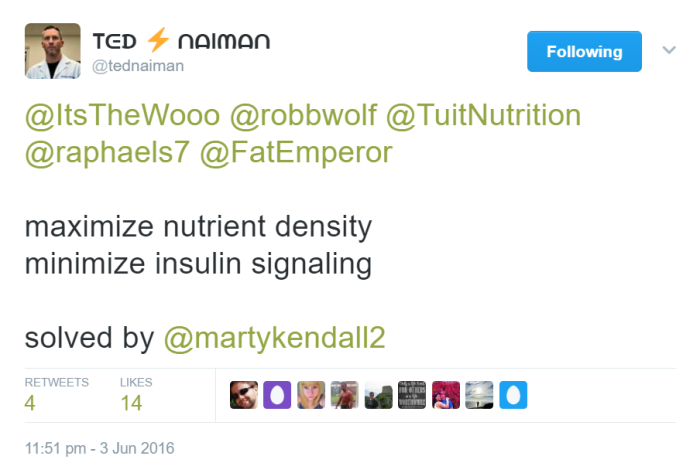
It’s remarkable how many people use the Nutrient Optimiser they find their appetite and cravings dissipate and they are naturally satisfied with less food.
13. Will the Nutrient Optimiser help me manage my diabetes?
Virta Health recently released exciting research demonstrating that a personalised low carbohydrate diet delivered electronically can be effective in improving blood sugar control and weight loss in adults with Type 2 Diabetes while significantly decreasing medications (Phinney et al. 2017).

The chart below shows how the study participants’ HbA1c decreased with a reduced carbohydrate diet over just ten weeks.
As insulin and blood sugars normalise weight reduces significantly.
A low carbohydrate diet will help you if you have diabetes. The amount of carbohydrate in the food you eat has a direct influence on your blood glucose and insulin levels.
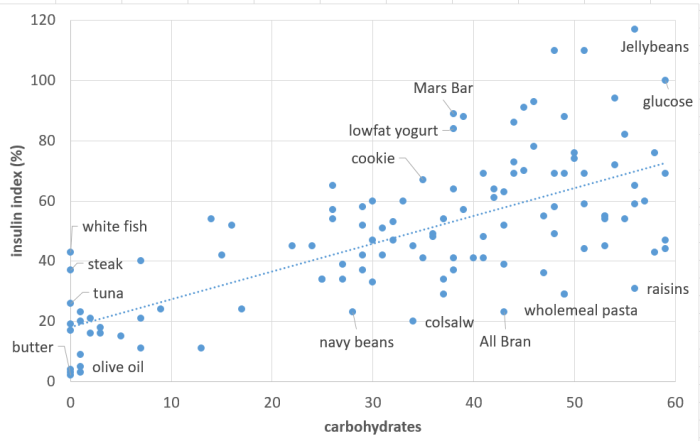
However, our insulin response to food is more accurately predicted when we also consider fibre and protein in the food we eat.
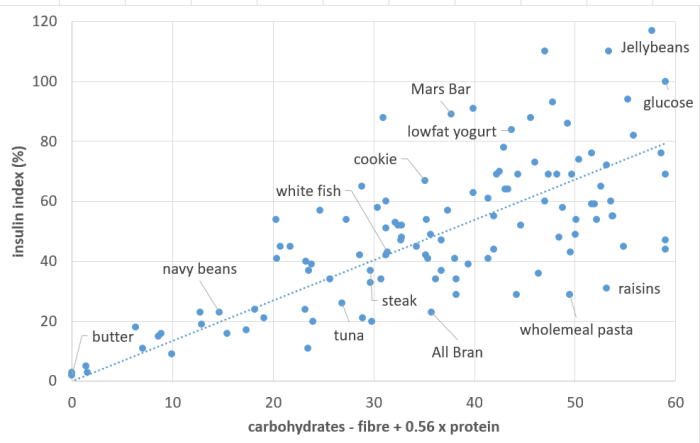
However, the problem with a very low insulin load, very high-fat approach is that is that it can be hard to obtain adequate vitamins and minerals.
The Nutrient Optimiser will help YOU choose foods that will normalise your blood glucose levels while also getting as many nutrients as possible.
While the Nutrient Optimiser algorithm takes things one step further by also considering a person’s micronutrient status to create a truly well formulated ketogenic diet.
The Nutrient Optimiser will also grow with you as you move from being a recovering diabetic to help you reach your target weight and then support your athletic performance.
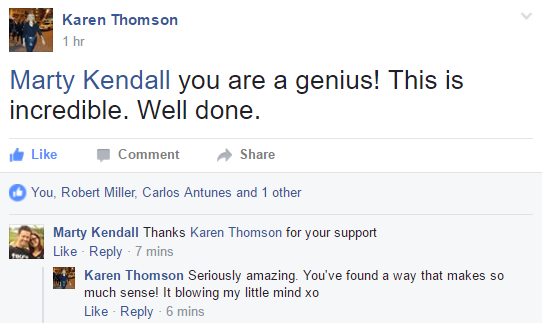
14. Will the Nutrient Optimiser help me achieve ketosis?
Nutritional ketosis and therapeutic ketosis are becoming popular for mental performance or management of chronic conditions such as cancer, epilepsy, Parkinson’s, Alzheimer’s or dementia. The Nutrient Optimiser will enable you to reduce the insulin load of your diet to achieve your ketogenic goals while also maximising the nutrient content of your diet as much as possible.
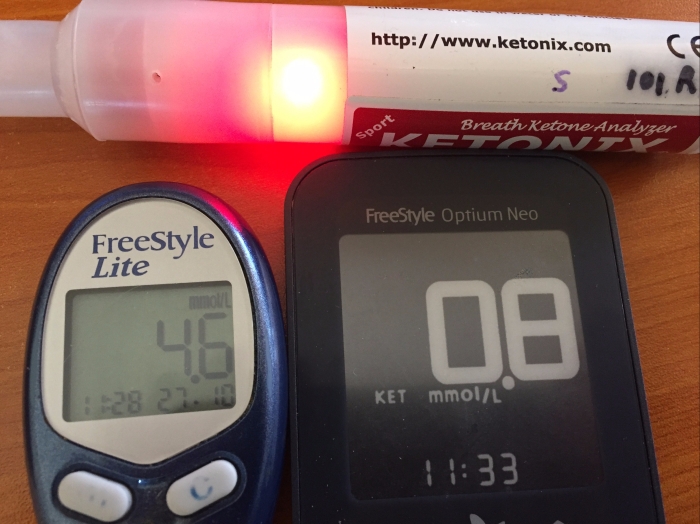
15. How will the Nutrient Optimiser help me with fat loss?
Once you have normalised your blood glucose and insulin levels, managing your energy intake is important if your goal is fat loss.
The Nutrient Optimiser will help you identify nutritious, low energy density foods that will help you to be satisfied with less fat on your plate (or in your coffee cup) to allow more energy to come from your stored body fat.

Foods with a lower energy density are typically hard to overeat but provide a ton of nutrients to optimise your mitochondrial function and will help reduce cravings.
16. Is the Nutrient Optimiser useful for athletes and bodybuilders?
Many athletes ‘carb up’ with energy dense, nutrient poor foods which are not optimal in the long-term.
If you have already normalised your blood glucose and body fat levels the Nutrient Optimiser will help you to identify nutritious higher energy density foods to fuel your activity.
If you’re looking to gain muscle the Nutrient Optimiser can help you identify higher energy density foods with the required nutrients to promote growth and muscle recovery.
17. What about longevity?
Not consuming too much food will give you the best chance of avoiding insulin resistance and delay the onset of many of the major diseases of ageing (e.g. cancer, heart disease, Alzheimer’s, stroke and Parkinsons).
Ensuring you get the nutrients you need without excess energy intake will maximise your chance of managing your appetite and eating less in the long-term.

“The Nutrient Optimiser is an awesome teaching tool!
“Why isn’t this stuff taught in schools? It should be compulsory education!
“Kids these days don’t even know what “real food” is.”
18. How often should I use the Nutrient Optimiser?
The Nutrient Optimiser has been designed to retrain your dietary habits and adapt with you through the various stages of your journey.
Like a ship’s rudder, it will continually adjust and redirect you towards where you want to go. We suggest you use the Nutrient Optimiser to review your food diary regularly to ensure you are continuing to move forward in the right direction.
20. Are plant or animal-based foods better?
There is much debate about whether plants or animals are a better source of nutrition.

Some people prefer and do better with more plant-based products while others prefer animal-based products.
The reality is that there are people who seem to thrive on polar opposite extreme dietary approaches. The body just needs nutrients and energy and isn’t too picky where it gets them from.

Plant-based foods tend to be better in terms of nutrients per calorie and have a lower energy density. This may be useful if you are trying to lose weight because whole food plant-based foods are hard to overeat.
Meanwhile, the nutrients in animal-based products can be more bioavailable and more energy dense which will enable you to get more calories in and hence potentially more nutrients.
The Nutrient Optimiser will work within your current preferences and highlight foods that will provide the nutrients you need from plant-based, animal-based or omnivorous foods.
20.1 Plant-based food example
The chart below shows the nutrients provided by someone diligently following plant-based dietary approach (see their full report here). That they need to focus on a number of amino acids, vitamin B12 and iron to move their nutrition forward, while they are getting plenty of a number of the other vitamins and minerals.
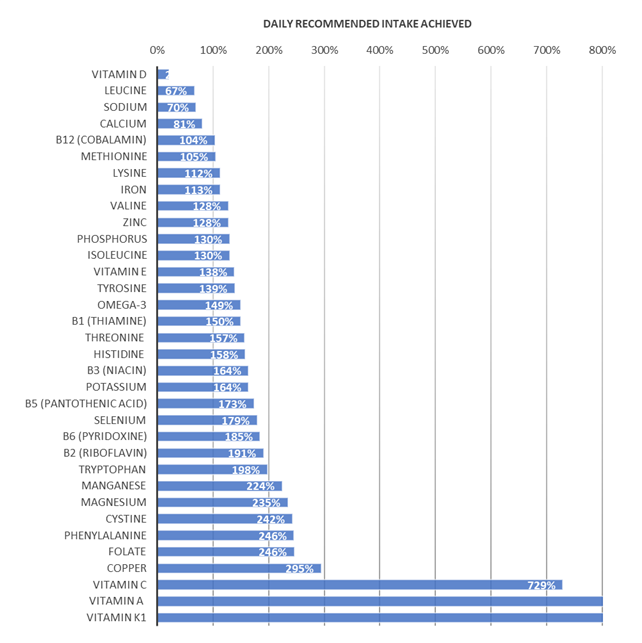
The table below shows that there are a number of nutrients that are out of balance in her diet.
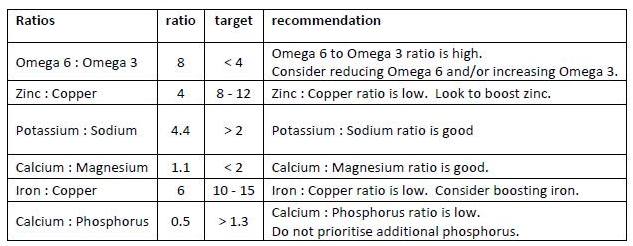
Based on the nutrient balance and the micronutrient fingerprint the Nutrient Optimiser would prioritise food and meals with the following nutrients:
- Vitamin D
- Leucine
- Sodium
- Calcium
- Vitamin B-12
- Methionine
- Lysine
- Iron
- Valine
- Zinc
- Omega 3
The foods listed below will provide more of these nutrients if the user wants to remain on an exclusively plant-based diet.

However, if this user was to consider incorporating some animal-based food as well, the food list below would provide the nutrients she is looking for with the least amount of energy.

20.2 Carnivore example
The chart below shows the micronutrients provided by carnivore diet advocate Dr. Shawn Baker (see Shawn’s full report here). 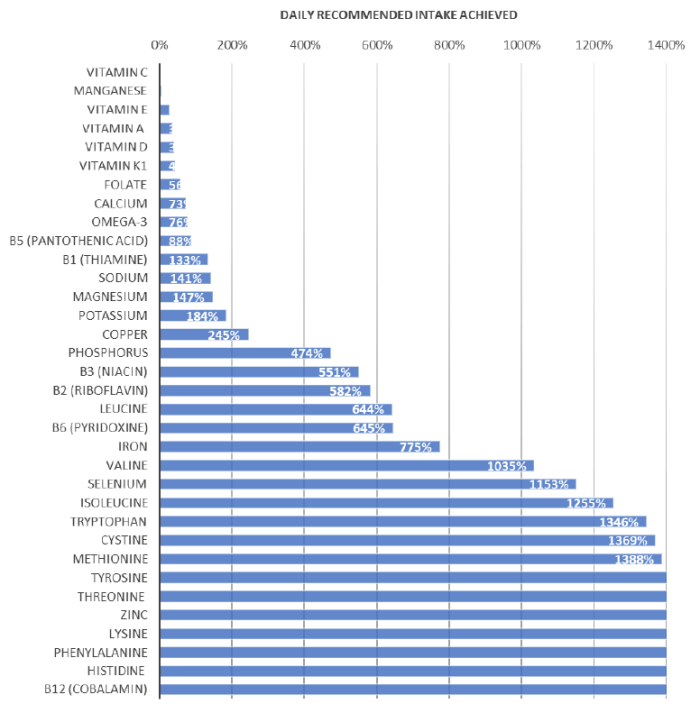
His nutrient balance ratios are shown in the table below.
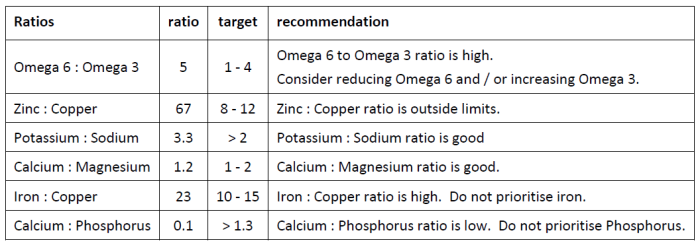 The food list below will provide the nutrients that he is not getting in large amounts while remaining carnivorous. We can see that his current red diet would benefit from some organ meats, seafood and eggs.
The food list below will provide the nutrients that he is not getting in large amounts while remaining carnivorous. We can see that his current red diet would benefit from some organ meats, seafood and eggs.
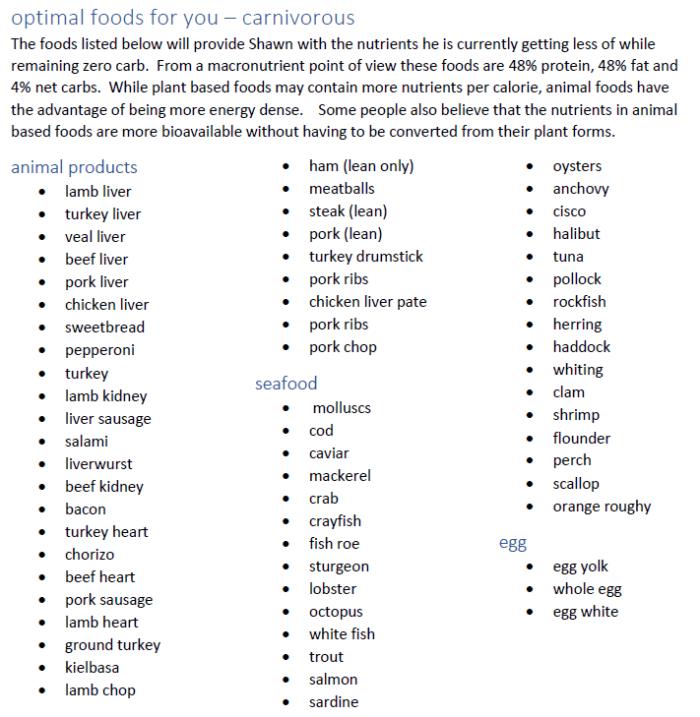
The foods listed below would provide the nutrients he is currently not getting a lot of if he chose to eat some foods from the plant kingdom. While there is still some meat and seafood on this prioritised list, there is a long list of vegetables relative to the vegan diet analysis above.
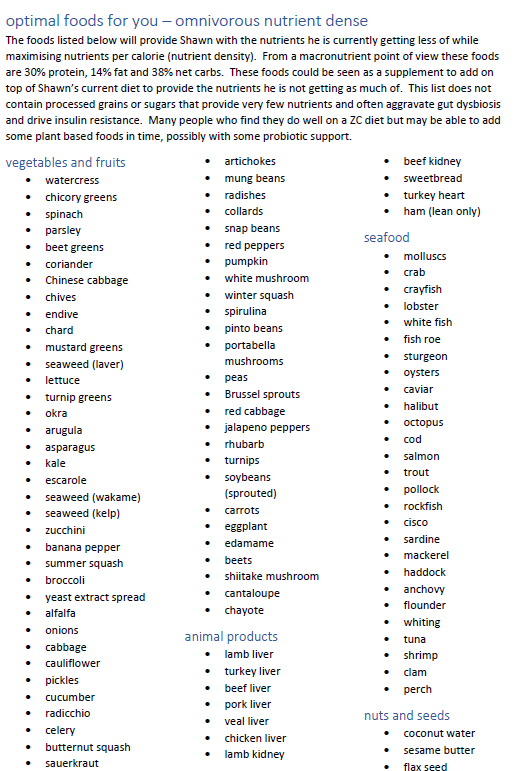
21. What other test data can I use?
The Nutrient Optimiser uses your food log to identify where you are not meeting the Recommended Daily Intake levels of the essential nutrients. Keep in mind though these recommended intake values don’t take into account an individual’s diet, activity levels and metabolism.
However, in addition to your food log, you can also use your blood tests for nutrients (e.g. vitamin D, iron, vitamin B12, folic acid, calcium, phosphorus, sodium, potassium, chloride) to identify additional nutrients to target with the Nutrient Optimiser.
If you want to dig a little deeper to check your nutrient status you could invest in a Genoval NutrEval or Spectracell micronutrient test to refine your micronutrient focus.
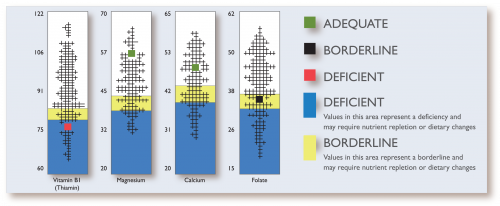
22. Can the Nutrient Optimiser help with other conditions?
If you have a known condition, we can focus on ensuring you are getting the micronutrients that are typically associated with that condition from real food.
For example, the image below shows the ‘nutrient wheel’ developed by Spectracell that highlights the various nutrients that are often deficient in people with diabetes. Check out the Optimal foods for you article to get more detail of the nutrients that can help with different conditions.
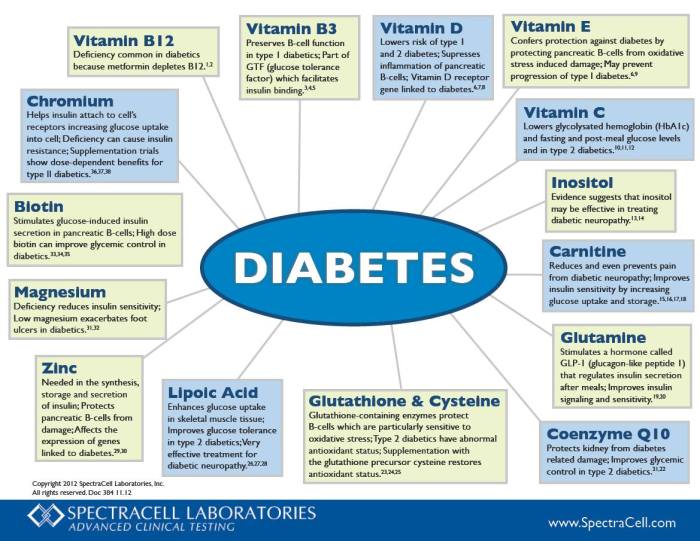
The Nutrient Optimiser will identify the nutrients that are missing in your diet and then we can also boost any nutrients that have not been identified that are typically deficient in people with these conditions.
23. What about bioavailability?
There are a number of micronutrients such as iron, zinc, vitamin A and amino acids (i.e. protein) that are more easily absorbed from animal foods compared to plant-based foods.
Unfortunately, the USDA food database only quantifies the amount of nutrients in a food.
The amount actually absorbed into your body can be influenced by a range of factors including the type of food and the person’s digestion.
Unfortunately, this can get complex and you need to consider both availability and bioavailability together. For instance, you can typically find a lot of vitamin A and iron in plant-based foods even though they are not as bioavailable. However, foods like omega 3 and zinc tend to be less available and bioavailable in plant-based sources.
Hopefully one day we will be able to account for the amount of a certain nutrient and factor it for an individual’s digestion and the bioavailability of that food. All we have for now is the amount of nutrients in the food and the recommended daily intake levels which don’t account for plant only or animal only extremes.
The chart below shows that a nutrient dense whole food diet can provide plenty of iron and vitamin A, however, we may need to pay more attention to some of the amino acids and zinc.

If zinc was low for a man or iron was low for pre-menopausal women and they had symptoms that indicated that these nutrients were an issue (e.g. low testosterone or low energy) we would look in further detail to ensure that the sources in their diet were bioavailable and assess whether supplementation or the incorporation of animal sources of these nutrients was required.
24. What about anti-nutrients?
Anti-nutrients such as phytic acid, tannins, lectins, protease inhibitors are plant compounds that can reduce the body’s ability to absorb other nutrients.
Unfortunately, it is hard to quantify the anti-nutrients in a food and how they may affect a person’s ability to absorb other nutrients.
If data to quantify the impact of anti-nutrients becomes available we will find a way to incorporate it into the analysis.
Anti-nutrients are typically found in seeds, grains and legumes which do not typically make the shortlist of nutrient-dense foods. So anti-nutrients are not going to be a big concern if you are focusing on nutrient density.
If you know you have specific digestive issues that could lead to impaired absorption you will need to pay special attention to anti-nutrients to make sure you are actually absorbing everything you need. If this is the case you can choose to apply the autoimmune and/or SIBO template which will eliminate most inflammatory foods that contain anti-nutrients.
25. What about all the other compounds that aren’t quantified in the USDA database?
Other nutrient ranking systems consider some additional nutrients. For example, Dr. Fuhrman’s Aggregate Nutrient Density Index includes lycopene, lutein, zeaxanthin, phytosterols, glucosinolates, angiogenesis inhibitors, oregano sulphides, aromatase inhibitors and the ORAC score.
However, unfortunately, these all of these additional parameters have not been extensively quantified. There also do not have widely recognised recommended daily intake levels for these other nutrients.
To avoid these complications, the Nutrient Optimiser has been designed around the essential nutrients as quantified for the eight thousand foods in the USDA food database.
While these additional nutrients are not able to be quantified by the Nutrient Optimiser analysis, you stand a better chance of getting adequate quantities the non-essential nutrients and secondary compounds if you are getting an adequate amount of the essential nutrient from whole foods (as opposed to supplements or fortified foods).
26. How do I download my servings.csv file?
Cronometer produces a servings.csv file that contains all the micronutrient data that the Nutrient Optimiser uses to optimise your diet. If you enter your Cronometer log in details in the application form we will download your data to run your report.
You can also upload your servings.csv into the Nutrient Optimiser free report to help refine your food and meal recommendations.
To download your servings.csv file click on the spikey wheel in the Account Information box at https://cronometer.com/#profile from a computer as shown in the image below and then click on export data to download your servings.csv file.
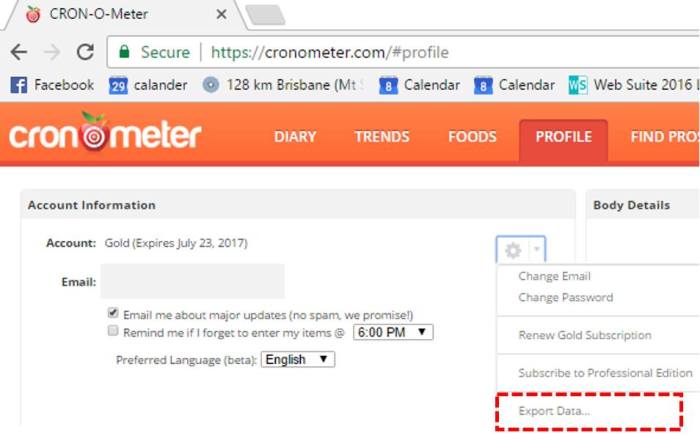
27. What are the most common nutrient deficiencies?
Nutrient deficiencies depend on your eating habits.

People following of a plant-based diet tend to be lower in omega 3 fatty acids, vitamin D, choline, vitamin B12 and a number of amino acids.

People following a ketogenic diet are often deficient in vitamin D, choline, potassium pantothenic acid, zinc, niacin, magnesium, selenium and folate.

People following a low carb diet are often deficient in choline, vitamin D, vitamin E, potassium and magnesium which are contained in non-starchy veggies which are sometimes avoided no a low carb diet (particularly if you are looking to minimise total carbs).

People following a carnivorous diet with no plant-based foods will be more likely to be deficient in vitamin K1, vitamin C, vitamin E, folate, vitamin D, omega 3 fatty acids, magnesium and potassium.

While there are typical deficiencies that relate to particular eating patterns, the nutrients you will need to prioritise vary widely depending on your current diet as well the nutrients you need to fill those nutritional deficiencies to optimise your diet.
28. How long do I need to log my food for?
If you eat the same thing every day you would only need to log one day in Cronometer to provide data for the required data for the Nutrient Optimiser analysis.
However, most people have a more varied diet and eat different foods based on their appetite, habits and activity levels. Logging for a week or two will capture all the food you eat based on your appetite and cravings, not just the foods you eat when you are being good because you are logging your food.
If you are a female and find that your food choices vary heavily based on your monthly cycle then it may be useful to log for a full month.
29. How is the “nutrient score” calculated?
Modern nutritional advice is largely dominated we shouldn’t do. We are told:
- don’t eat too much,
- don’t eat too much fat,
- don’t eat too much carbohydrate,
- don’t eat too much protein,
- don’t eat too much salt, or
- don’t eat too much saturated fat.
The Nutrient Optimiser Score turns this approach on its head and drives people to focus on getting the nutrients they need from whole foods.
Once you’ve had your fill of good food, most of the other issues look after themselves.
We’re hoping that the Nutrient Optimiser Leaderboard will drive some ‘healthy competition’ to see people compete to create more nutrient-dense foods.
Rather than simply prioritising all foods, the Nutrient Optimiser identifies foods that contain higher levels of the nutrients you are not getting enough of.
Most people will have a number of nutrients which far exceed the recommended daily intake levels. There is generally not a lot of use in having many times the recommended daily intake level.
The nutrient score is normalised to a standard 2000 calories per day so you don’t get a higher score if you just eat more, or penalised for eating less. This makes the nutrient score is a measure of food quality, regardless of quantity.
In the example below, we see that 87% of the area to the left of the red line at 300% is filled, so the score is 300%. The Nutrient Optimiser algorithm will help you focus on the nutrients that you are getting less of. This will help you to rebalance your diet and automatically de-emphasise the nutrients you are getting more than enough of.
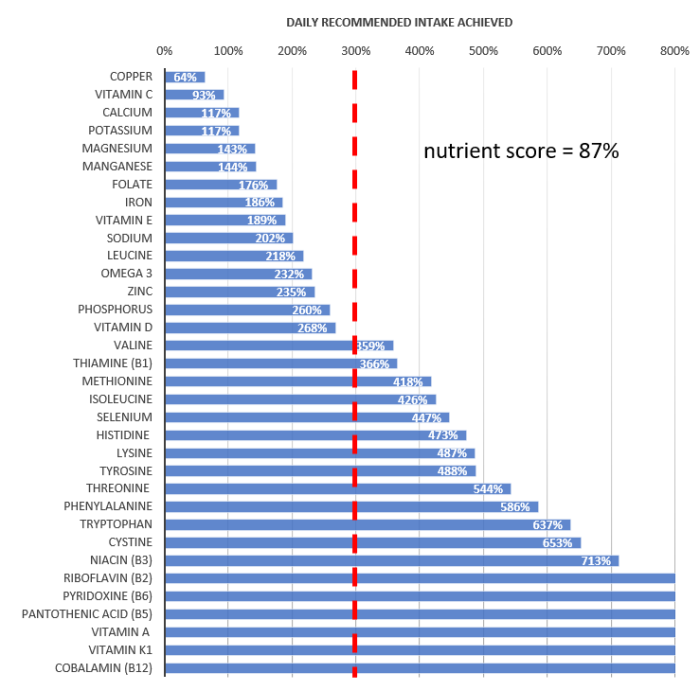
We’re hoping that the Nutrient Optmiser Leaderboard will help to demonstrate what good nutrition looks like in practice. You can click on their reports to see their full reports.
30. Why do you use nutrients per calorie?
Previously Dr Joel Furhman has considered nutrients per calorie to develop the Aggregate Nutrient DEnsity Index (ANDI).
Meanwhile, Dr Mat Lalonde developed an alternative nutrient density index using nutrients per gram (weight) of food.
Both of these men have had a significant influence on the development of the Nutrient Optimiser.
The nutrients per weight of food approach used by Lalonde suits people who are active or want to gain weight (e.g. a CrossFit athlete or a triathlete). Lalonde’s approach also considers essential amino acids and essential fatty acids. The result is a very meat heavy list of foods. Lalonde also sticks to the nutrients available in the USDA database which are widely accepted.

The nutrients per calorie approach used by Dr Fuhrman leads to prioritise low energy density foods that are very hard to overeat. Fuhrman’s approach does not consider protein or fatty acids but instead emphasises a range of other parameters that are only available for fruits and vegetables, so we end up with a list of plant-based products.

Although calories is not a perfect measure and is a word that comes with a lot of baggage, most people eat a similar amount of energy per day, regardless of the source. So thinking in terms of nutrients per calorie helps us get the most calories per day.
Thinking in terms of servings or grams of food would make it very hard to ‘compare apples with apples’ to get a fair ranking of foods because the number of servings or weight of food consumed can vary between people.
The addition of the energy density parameter enables you to tailor your food choices to suit your goals. For example, you would focus on lower energy density foods you wanted to lose body fat and higher energy density foods you were doing a lot of endurance activities and needed to get the nutrients in.
The insulin load parameter also tends to make foods more energy dense and also tailor food choices to help people stabilise blood sugar and insulin levels. Once your blood sugars have stabilised, moving to focus on lower energy density foods may be helpful if you want to lose body fat.
The other big differentiator between the Nutrient Optimiser is that is that we only focus on the nutrients that you are currently finding harder to obtain.
31. Who created the Nutrient Optimiser and why?
The Nutrient Optimiser was created by Marty Kendall. His wife Monica has Type 1 diabetes and was suffering from obesity and pre-diabetes himself.

As they say, necessity is the mother of invention. In early 2015 Marty analysed the food insulin index data in an effort to more accurately calculate the insulin doses required for his wife Monica’s food. Dosing insulin for carbohydrate is fairly well understood, but the food index helps us understand how to accurately calculate insulin doses for protein and fibre.
The food insulin index data can help calculate which foods require more or less insulin. Choosing the foods that require less insulin enables stabilisation of blood sugars. This is a BIG DEAL for people with diabetes and cannot produce enough insulin.

Building on the work of diabetes gurus like Dr. Richard Bernstein, this understanding of the food insulin index enabled Monica to dramatically stabilise her blood sugars and halve her insulin dose.
Monica has been able to greatly improved the quality of her life and energy levels. She has gone from struggling to get through the day and multiple naps to be able to work passionately as a primary school classroom teacher and thriving.
As shown in the photos below, Marty was also able to lose some weight, reduce his inflammation levels and normalise his blood glucose levels.

After some further analysis. Marty realised that, while it is good to reduce highly processed insulinogenic foods, the foods that produce the least insulin are typically not as nutritious. Using his data analysis skills developed as an engineer, he designed a system to identify foods with more of the harder to obtain nutrients.
Using a multi-criteria analysis process he was able to combine the insulin load and nutrient density parameters to identify nutrient-dense foods that also stabilise blood sugar and insulin levels.
After considering a number of other factors, energy density was added to identify foods that would help someone to eat and lose weight once their blood sugars and insulin levels were under control.

Marty has also benefited greatly from the input of a ‘hive mind’ of international experts, particularly through the Optimising Nutrition Facebook Group, which has helped him develop and refine the ideas on the Optimising Nutrition blog that have been incorporated into the Nutrient Optimiser.
There is a lot of confusion when it comes to optimal diets. Nutritional recommendations are often clouded by commercial conflicts by of interest or ethical/religious belief systems.
Marty hopes that the Nutrient Optimiser will bring clarity to the confusion that surrounds nutrition to show people what they can eat to thrive rather than just pointing out what they shouldn’t eat. Regardless of their condition, preferences or goals, the Nutrient Optimiser will tell them which foods are actually better than others.
Marty has created a range of food lists to provide clear recommendations to help people choose the foods that will provide the most nutrients while aligning with their goals. These food lists are documented for use freely on the Optimising Nutrition blog here.
The shortcoming of the food lists, however, is that they do not consider a person’s current diet. Most people won’t stick to a radical dietary change but often do better with incremental changes to replace not so good with better. Analysing a person’s current diet enables accurate identification of the new foods that should be added to balance their diet at a micronutrient level. The Nutrient Optimiser also identifies foods that should be removed from a person’s current diet.
Rather than providing a ‘one size fits all’ dietary approach, the Nutrient Optimiser provides a personalised nutritional solution and will continue to adapt, not just to your current diet but also to your blood sugars, ketone levels and weight to help you reach your goals.



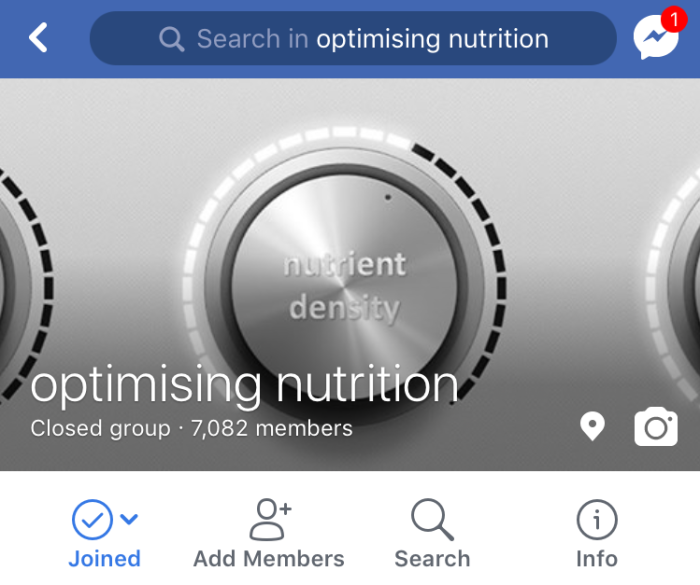
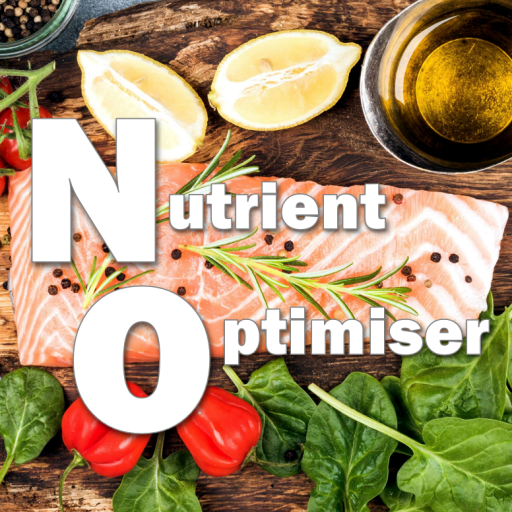
One thought on “FAQ”